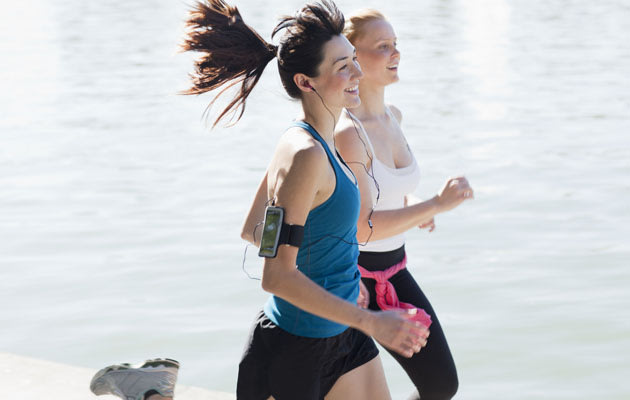Toned upper arms, biceps and
triceps is one thing which women look forward to but neglect to achieve due to
improper concentrate on target areas. Arm workouts are many and are focused on
toning parts of your muscles and reducing the unnecessary accumulation of fat.
Here are a few such exercises which can help in focusing only the arm exercises, helping
in toning in addition to gaining strength.
Best Arm Exercises
Overhead Extension Using Dumbbells
The main objective of this exercise is posterior deltoids. You have to stand with your feet and hip disseminate. The knees are to be bent slightly and also you need to hold a dumbbell inside your hand. Now, slowly you need to start by reaching your arms upwards too deep. The dumbbell needs to be inside a vertical position.
After 3-4 seconds you need to bend your elbows minimizing these dumbbells slowly just behind your face. The arms have to be near to your head. The elbows have to point towards the roof. Once done you are able to straighten your arms upwards after which repeat again.
Dumbbell Curl
Begin by standing in a position which keeps the feet and shoulder wide apart. Hold a dummbell inside your hand just near your hips. Your palms should face outwards. Now, begin by bending your arms to this type of position so that your left arm is totally parallel to the surface. Curl you and bring it towards your shoulder. Lower it again and go to the position where you started. Remember, that the left arm should be instead all the while.
You can do 8 curls making use of your arm. The elbows ought to be kept close to your body. You can test to switch sides also. If you're beginner start by just doing 5 curls so that as you are comfortable you can move upto 8 curls. To create a variety you can try out double curl too. You can do this by curling both the arms together and bringing them towards your chest after which returning to the starting position.
Resistance Band
If you're not happy using dumbbells or searching for a variety you can try resistance bands. They are rubber bands which are available in numerous intensities. You need to hold them near your chest and begin to pull them sideways towards your arms as hard when you are able to pull. The advantage of these bands is they are easy to carry and store because they are lightweight. You can exercise with one of these bands for 30 minutes per day.
Chair Dips
Experts think that chair dips are the best to tone the rear arms exercises. You will need a chair for that exercise. Start by sitting in the advantage and keeping your feet joined. Now, keep the hands on the seat and allow your feet rest on the surface. Begin by bending your elbows and cutting your body downwards.
Straighten the arms and slowly raise you to ultimately position where you started. Do that 4 times initially and as you receive comfortable you can do 8 repetitions per session.
Best Arm Exercises
Overhead Extension Using Dumbbells
The main objective of this exercise is posterior deltoids. You have to stand with your feet and hip disseminate. The knees are to be bent slightly and also you need to hold a dumbbell inside your hand. Now, slowly you need to start by reaching your arms upwards too deep. The dumbbell needs to be inside a vertical position.
After 3-4 seconds you need to bend your elbows minimizing these dumbbells slowly just behind your face. The arms have to be near to your head. The elbows have to point towards the roof. Once done you are able to straighten your arms upwards after which repeat again.
Dumbbell Curl
Begin by standing in a position which keeps the feet and shoulder wide apart. Hold a dummbell inside your hand just near your hips. Your palms should face outwards. Now, begin by bending your arms to this type of position so that your left arm is totally parallel to the surface. Curl you and bring it towards your shoulder. Lower it again and go to the position where you started. Remember, that the left arm should be instead all the while.
You can do 8 curls making use of your arm. The elbows ought to be kept close to your body. You can test to switch sides also. If you're beginner start by just doing 5 curls so that as you are comfortable you can move upto 8 curls. To create a variety you can try out double curl too. You can do this by curling both the arms together and bringing them towards your chest after which returning to the starting position.
Resistance Band
If you're not happy using dumbbells or searching for a variety you can try resistance bands. They are rubber bands which are available in numerous intensities. You need to hold them near your chest and begin to pull them sideways towards your arms as hard when you are able to pull. The advantage of these bands is they are easy to carry and store because they are lightweight. You can exercise with one of these bands for 30 minutes per day.
Chair Dips
Experts think that chair dips are the best to tone the rear arms exercises. You will need a chair for that exercise. Start by sitting in the advantage and keeping your feet joined. Now, keep the hands on the seat and allow your feet rest on the surface. Begin by bending your elbows and cutting your body downwards.
Straighten the arms and slowly raise you to ultimately position where you started. Do that 4 times initially and as you receive comfortable you can do 8 repetitions per session.





